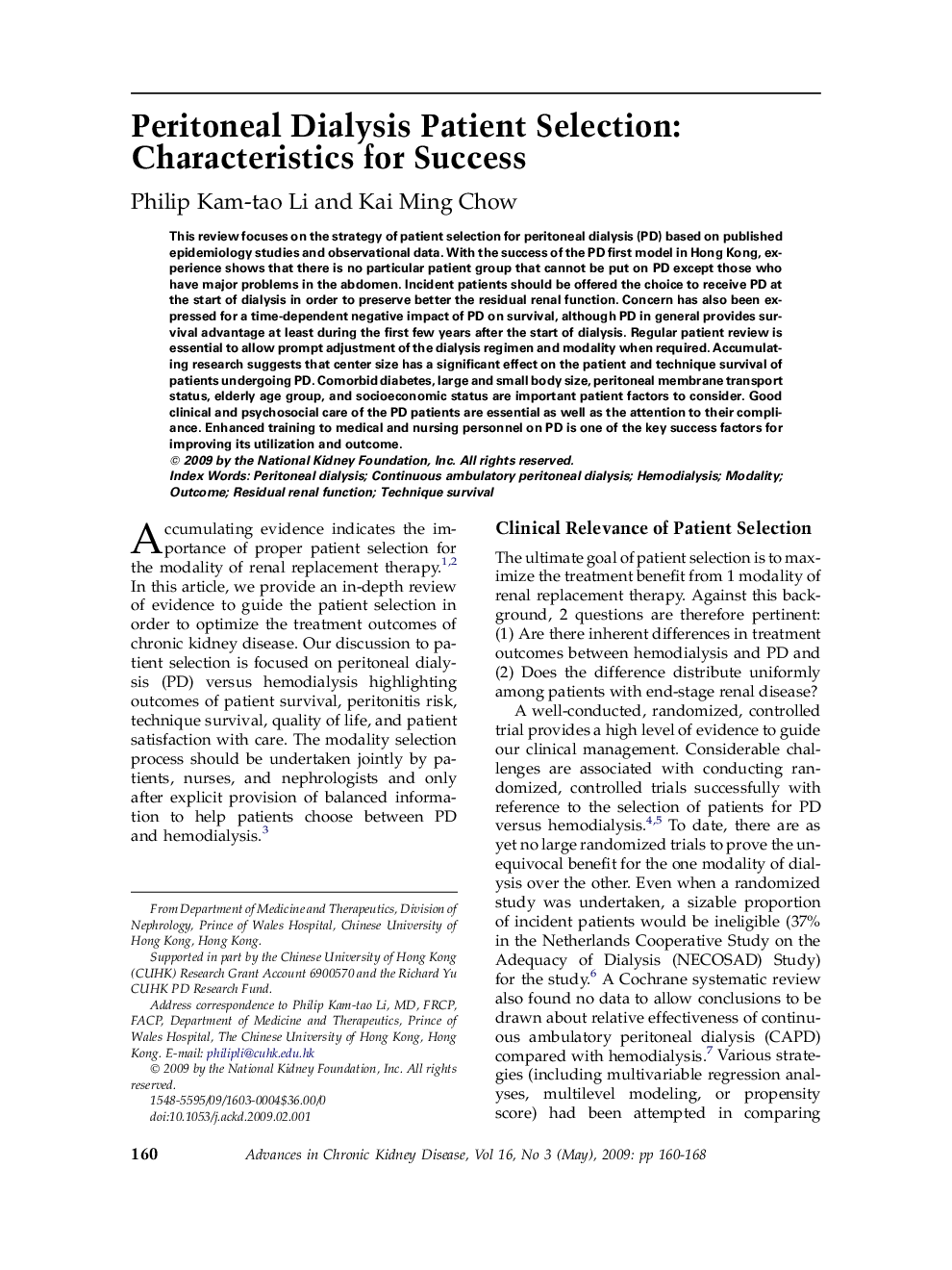| Article ID | Journal | Published Year | Pages | File Type |
|---|---|---|---|---|
| 3847121 | Advances in Chronic Kidney Disease | 2009 | 9 Pages |
Abstract
This review focuses on the strategy of patient selection for peritoneal dialysis (PD) based on published epidemiology studies and observational data. With the success of the PD first model in Hong Kong, experience shows that there is no particular patient group that cannot be put on PD except those who have major problems in the abdomen. Incident patients should be offered the choice to receive PD at the start of dialysis in order to preserve better the residual renal function. Concern has also been expressed for a time-dependent negative impact of PD on survival, although PD in general provides survival advantage at least during the first few years after the start of dialysis. Regular patient review is essential to allow prompt adjustment of the dialysis regimen and modality when required. Accumulating research suggests that center size has a significant effect on the patient and technique survival of patients undergoing PD. Comorbid diabetes, large and small body size, peritoneal membrane transport status, elderly age group, and socioeconomic status are important patient factors to consider. Good clinical and psychosocial care of the PD patients are essential as well as the attention to their compliance. Enhanced training to medical and nursing personnel on PD is one of the key success factors for improving its utilization and outcome.
Keywords
Related Topics
Health Sciences
Medicine and Dentistry
Nephrology
Authors
Philip Kam-tao Li, Kai Ming Chow,
